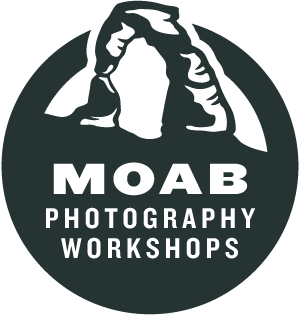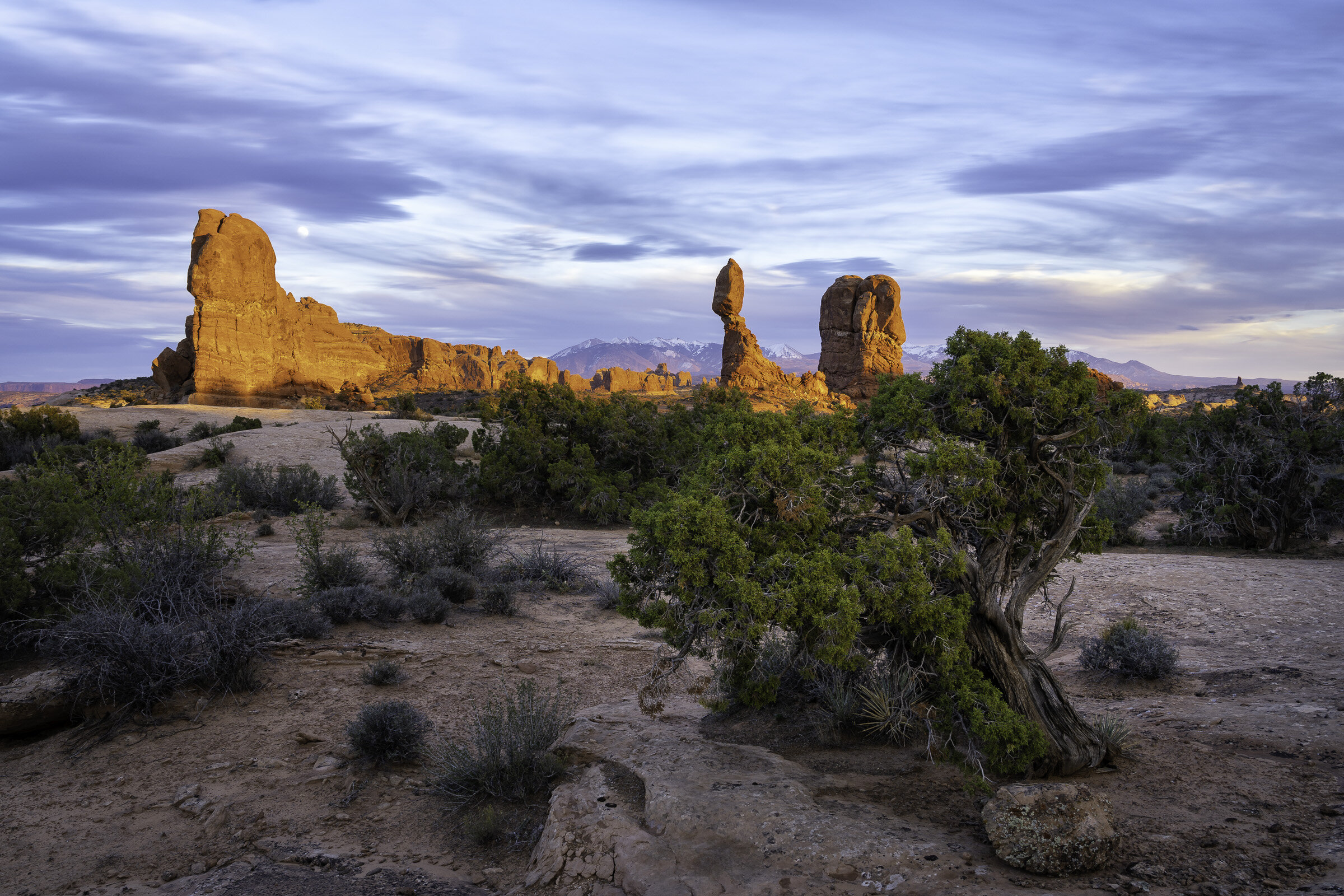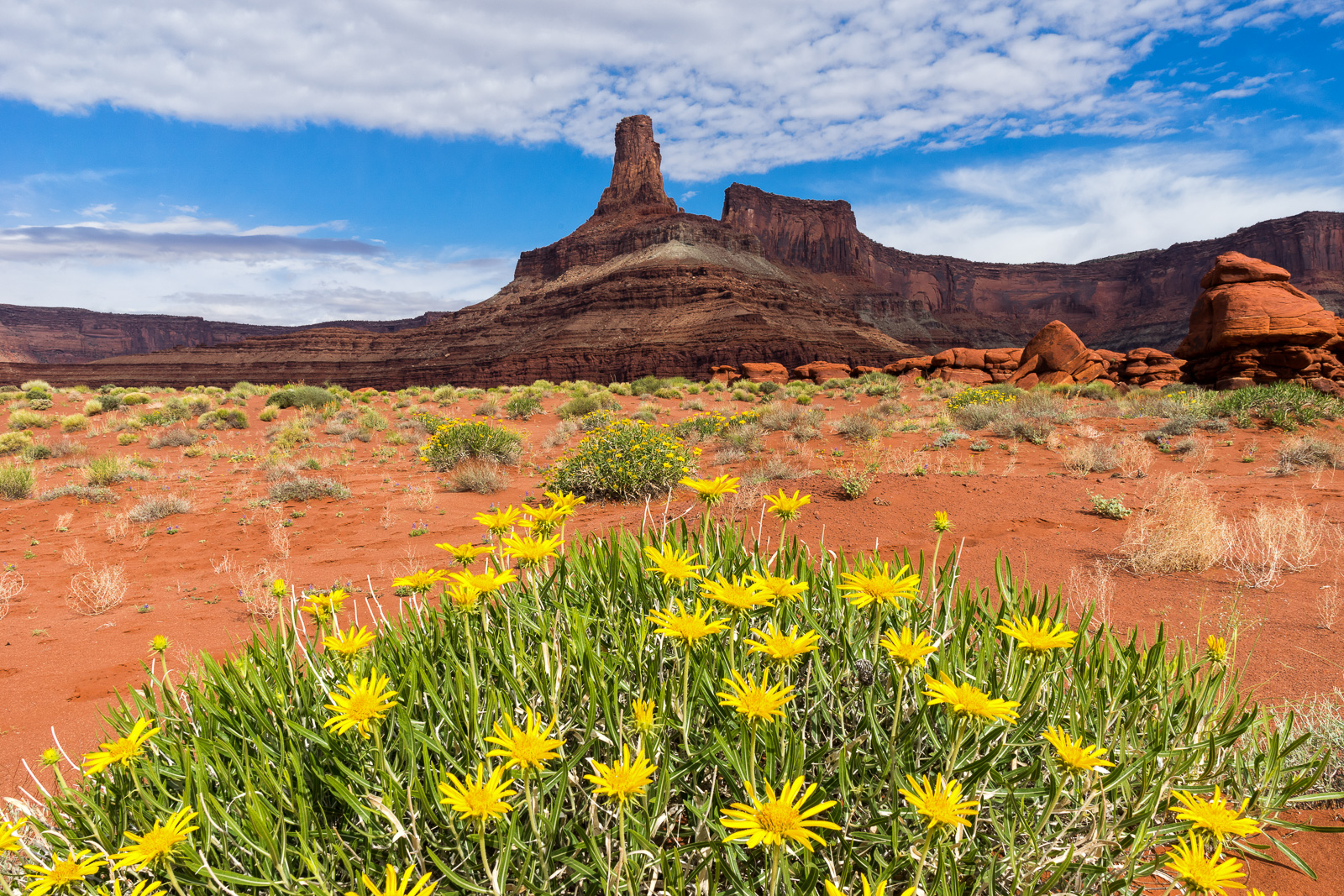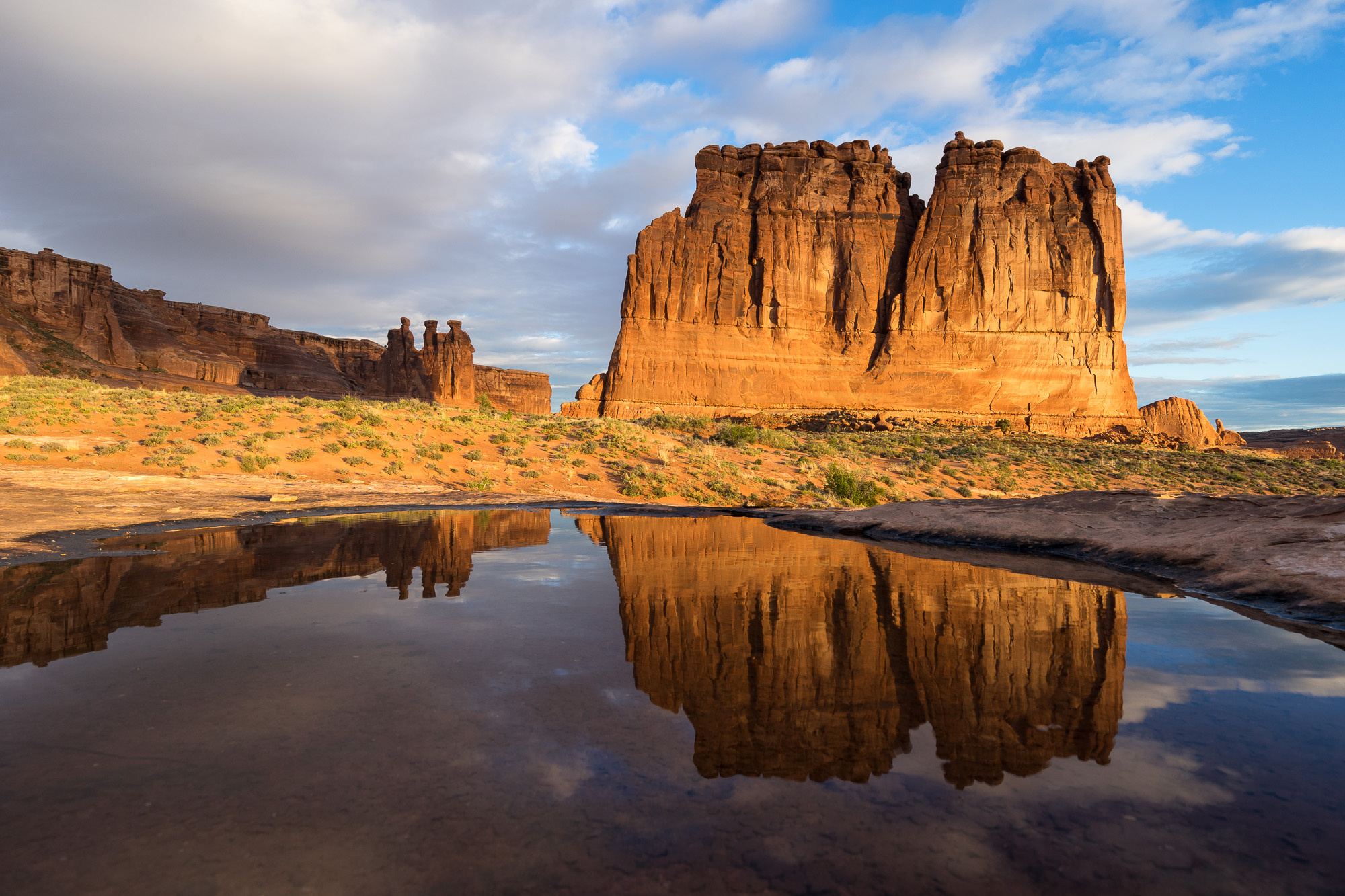When you’re a photographer who lives in Moab, you’ve got an endless variety of incredible landscapes to photograph. Wildflowers in the spring, monsoon storms in summer, gorgeous multi-hued leaves in the fall and pristine snow on red rocks in winter. There are canyons and waterfalls, arches and balancing rocks and twisted juniper trees, mountains and lakes, wildlife and wild sunsets. What you don’t have though, is the aurora. Colorful waves of light dancing across the northern sky before a curtain of twinkling stars. And then, on an autumn day in October, an aurora alert flashes across your iPhone screen. For three hours, from 9 to midnight, there’s a KP rating of 8 and a predicted 100% aurora viewing opportunity. It’s already dark, so you step into the backyard and point your iPhone camera to the north. There, on the screen, is a brilliant red aurora hovering over the roof of your neighbor’s house.
That’s exactly what happened to me last week. At almost 54 years old, and having been a nature photographer for 25 years, I was about to photograph my first aurora. The next few minutes were chaotic as I quickly threw on hiking boots, gathered my gear, grabbed a drink and some snacks, and tossed everything into the backseat of my Land Cruiser. Adrenalin flowing, Melissa and I excitedly sped toward Arches National Park. In the distance, a steady stream of headlights were visible climbing up the entrance road that ascends a series of switchbacks leading from the valley floor into the heart of the park. Clearly, I wasn’t the only one who had received an aurora alert.
We made our first stop at Courthouse Towers, where several prominent landscape features erupt skyward in great pillars of red sandstone. I’ve shot this location dozens of times, in every season, and at all times of the day. I know it intimately and quite frankly, I’m embarrassed to say that I’ve grown somewhat tired of it. Until this night, that is. Nothing could have prepared me for the moment after the first click of my shutter. There on the LCD screen appeared an image of a hulking monolith known as The Organ, and above it was a vibrant ruby red, star filled sky. For what felt like minutes, I just stared at the screen. There they were, the freaking northern lights above the Moab desert! I was an aurora photographer!
Then, I zoomed in and quickly realized, I was an aurora photographer who was so overcome with excitement, I’d forgotten to focus my lens. That’s when reality bitch slapped me in the face. I knew absolutely nothing about photographing auroras. I’d gotten a few helpful tips from my friend Jason Hatfield, an insanely talented photographer with extensive experience shooting the night sky, including too many auroras to count. I took a moment to collect myself before my second attempt. Have you ever tried to manually focus on a distant object in near complete darkness? It ain’t easy. At least in my experience, it’s a matter of trial and error. Set the focus, shoot, check for sharpness, make a minor adjustment, repeat. Eventually, I got my focus dialed in and then went to work finding an optimal exposure. Jack up the ISO, set the exposure, keep the aperture at f/2.8. Nope, way too dark. Increase exposure, try again. And again. And again. Until finally, burned onto the memory card was a sharp(ish), mostly properly exposed image.
We stayed at Courthouse Towers for quite some time. I made a few dozen images, experimenting with different compositions, each one unique in that no two northern light photos are ever the same. When the colors began to fade, we moved on. Our next stop was Balanced Rock, where a significant crowd had gathered to enjoy this rare spectacle. The process repeated itself, and again we stayed until the aurora vanished. We moved on to the Windows area, but didn’t stay long as the colors were muted and occupied only a small area of the sky.
Reluctantly, we decided to call it a night. As we made our way out of the park, Melissa noticed a faint glow in the rear view mirror. We stopped again at Courthouse Towers to quickly check for the aurora using our iPhone cameras, one of the tips Jason had shared with me. Digital camera sensors are far more sensitive to light than our eyes, and auroras that may not be visible to the naked eye, can be easily recorded via camera and viewed on-screen. Much to our delight, the sky was again brimming with color! We stayed until the aurora disappeared completely. This time, I experimented with a lower ISO (400) and longer exposures (20 - 25 seconds), knowing that it would result in cleaner (i.e. less noise) image files. I was also pleased to discover that with a faint aurora, using a longer exposure seemed to result in brighter colors that covered more of the sky.
We pulled into our driveway at midnight. I had a Zoom meeting in just a few hours and though I was eager to download and view my images, I did the responsible thing and went to bed. That night, I dreamt of auroras. In my dreams, I could see them in the sky with my own eyes and they swirled around in a kaleidoscope of psychedelic colors. Following my meeting, I popped the SD card into my computer and began to cull through over 200 images from my incredible night with the northern lights, ultimately narrowing it down to about ten photographs, a few of which are displayed in this post. I guess now I need to order new business cards, so I can add “Aurora Photographer” to my title. ;-) This was an evening I won’t soon forget and if I’m lucky, somewhere down the road, I’ll have another opportunity to experience the northern lights.

















